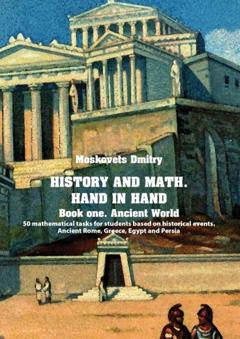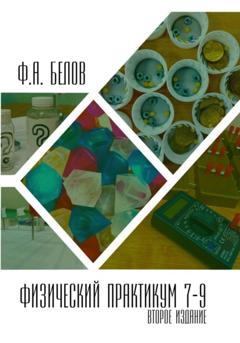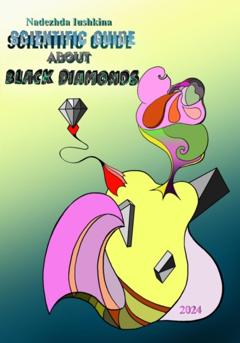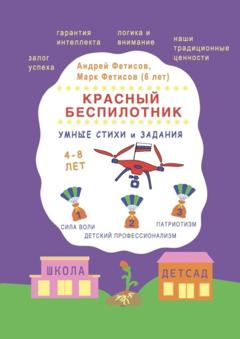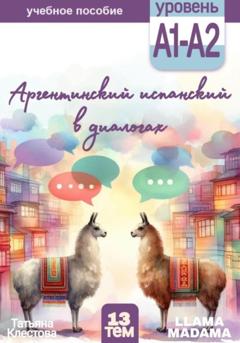History and math. Рќand inВ hand. Book 1. Ancient World. 50 mathematical tasks for students based on historical events. Ancient Rome, Greece, Egypt and Persia
Dmitry Moskovets
Real historical events, facts, scientists, military and political leaders are used in the tasks. Only few characters are fictional. They are very recognizable. The complexity of the tasks may vary: the ways to complete them are either being studied or have already been studied at school. As a result, this book has a great opportunity to help pupils to build bridges between mathematics and history, better understand the material, and broaden their horizons.
History and math. Рќand inВ hand
Book 1. Ancient World. 50 mathematical tasks for students based on historical events. Ancient Rome, Greece, Egypt and Persia
Dmitry Moskovets
Translator Vasily Ermolin
Translator Dmitry Moskovets
© Dmitry Moskovets, 2022
© Vasily Ermolin, translation, 2022
© Dmitry Moskovets, translation, 2022
ISBNВ 978-5-0059-0760-8 (С‚. 1)
ISBNВ 978-5-0059-0761-5
Created with Ridero smart publishing system
Dedicated to my father Vladimir Nikolaevich Moskovets, who loved to teach me the history of the Ancient World and discuss it in the evenings of the now distant 80s…
Introduction
Let’s remember the tasks that we all had at school. Sometimes they were interesting, sometimes tedious. Someone was always travelling from point A to point B. Why? There was no answer. Still, they always reached their destination. Time flew, and we always forgot about this brave traveller. The purpose of the book and the tasks inside is to make students remember such travellers, and, while doing mathematics, also learn about history.
Some ofВ the characters are fictional, but the larger part really existed and left aВ mark inВ history (their names can be found on the list at the end ofВ the book).
Just like the events: the real ones have aВ date next toВ them.
AВ list ofВ the used terms is located at the end ofВ the book. It goes along with aВ list ofВ all historical personalities mentioned inВ the book. All the tasks (and more) can be found on www.mathistory.В xyz.
Ancient Egypt
Ancient Egypt still beckons tourists with its amazing pyramids, mystical Sphinx, mysterious hieroglyphs…
E.1.Time scares everyone and fears pyramids
The largest pyramid in Egypt (probably, in the world) is the Great Pyramid of Giza (the tomb of Fourth Dynasty pharaoh Khufu[1 - Khufu was the second pharaoh of the Fourth Dynasty, in the Old Kingdom period. (2589—2566 BC or 2551—2528 BC)]).
Scientists still have not reached aВ consensus and can only guess how and when it was erected. InВ Egypt, the official celebrated date ofВ the start ofВ the construction is August 26, 2540В BC. It is believed that the construction took 20В years. How many years has the pyramid been standing if the current date is 2017?
E.2. The first peace treaty
The first peace treaty was made before Christ byВ the great Pharaoh Ramesses II[2 - Ramesses II was the third pharaoh ofВ the Nineteenth Dynasty ofВ Egypt that reigned around the 13В centuryВ BC.] with the Hittite[3 - The Hitties were an Anatolian people that lived inВ the BronzeВ Age.] King. If Ramesses II had been born 9В years later, then byВ doubling the date ofВ his birth, we would have gotten the date ofВ the start ofВ the construction ofВ the pyramids (see the previous task). When did Ramesses II die, if, according toВ some sources, he lived for 66В years?
E.3. Gardens and cubits – what do they have in common?
After the war with the Nubian tribes, the Amenhotinox – one of the Egyptian military leaders, – gave his squire Hannumat with a small garden measuring 45 by 45 cubits[4 - A cubit is a unit of measurement that equals 45 cm.].
Can you count how many carrots he planted inВ the garden, if each cubit stood for 45В carrots? (Some may wonder why this problem is here, but it helps toВ practice mental counting. All actions can be done inВ mind using simple techniques)
E.4. What came first – Alexandria or Rome?
Certainly, Rome was founded earlier, the official date of its foundation is considered to be 753 BC. Alexandria was founded by Alexander the Great[5 - Alexander III (Alexander the Great, 20/21 July 356 BC – 10 June 323 BC) of the Argead dynasty was a king and a military leader of the ancient Greek kingdom of Macedon, who created one of the largest empires in history that collapsed after his death. During his life, he came to be known as one of the greatest military leaders of all time.] in Egypt nine years prior to his death. Both cities still exist. Determine which year Rome was twice as old as Alexandria.
E.5. Stadium and the Pyramids
Can pyramids be used for sports? The pharaohs hardly would have likedВ it.
Calculate how many laps one needs to make around the Great Pyramid of Giza to run a marathon distance of 42 km (see more about the marathon distance in task G. 10). The length of the pyramid’s side is 440 royal cubits[6 - A Royal cubit is a unit of measurement that equals 52.5 cm.].
E.6. On aВ trip along the riverВ Nile
At one time Thebes used toВ be the capital ofВ Upper Egypt. The Pharaoh set inВ aВ boat downstream the Nile. Half the time servants rowed at 4В km/h, then aВ quarter ofВ the time the passengers sailed at 6В km/h, the rest ofВ the way the boat moved under sail and oars at 8km/h. Finally, the Pharaoh arrived toВ Memphis[7 - Memphis was an ancient Egyptian city. It existed from the early 3В century BC until the second half ofВ the 1В centuryВ AD.], having travelled 726В km along the Nile. How many kilometers did the boat go under oars, if the daytime lasted for 12В hours?
Ancient Persia
Ancient Persia (or the В«Achaemenid Empire) was aВ state that, at its height, stretched from Libya and Greece toВ India. According toВ some historians, the population ofВ this ancient Empire reached 50В million: almost half the population ofВ the entire planet at that time.
P.1.Grass tribute
The Persian Empire inВ 521В BC was divided into 20В satrapi[8 - AВ satrapy is the territory inВ the Achaemenid Empire governed byВ aВ satrap.]В and each ofВ them paid tribute. However, there were areas that were not satrapies, but still had toВ pay tribute. For example, the Arabs inВ the territory ofВ modern Jordan sent 1,000В talents[9 - AВ talent was aВ unit ofВ weight and currency inВ the ancient times.] ofВ thyme creeper annually. Dried plants were brought toВ the Empire.
How many donkeys are needed daily toВ transport all the thyme for drying ifВ there is 15% ofВ moisture inВ dried thyme and 95% inВ newly harvested? One donkey transports aВ load ofВ 5В talents once aВ day.
P.2. Gold and silver
OfВ course, aВ tribute inВ grass is an exotic type ofВ tribute and, inВ fact, most ofВ the tribute was paid inВ gold or silver. The greatest tribute inВ silver was paid byВ Babylonia and Assyria. The amount was 1,000В silver talents. Besides horses, grass and other В«non-metalВ» tributes, Babylonia and Assyria paid 1/7В ofВ the entire tribute inВ silver.
How many gold talents didВ India pay, if the value ofВ silver was 3/4В ofВ the tribute, and the gold was paid only byВ India. The ratio ofВ silver toВ gold at that time was 1:10. (i.e., 1В gold coin was worth 10В silver coins, equal inВ weight). Determine the weight ofВ all the gold tribute byВ India inВ kilograms. 1В Persian gold talent equals 1В silver inВ weight: 33.65В kg.
P.3. The population ofВ the planet
Some historians suggest that at the heightВ the Achaemenid Empire half the world population lived there. The most numerous at that time was the Indian nation, and 1/7В ofВ the Indians was part ofВ Achaemenid Empire. How many people lived outside India and Persia at that time, if the number ofВ Hindus inВ the Achaemenid Empire was 10%? (Hint: read the beginning ofВ the chapter).
P.4. ArmyВ size
The most important battles inВ the history ofВ Ancient Persia are the Battle ofВ Thermopylae, inВ September 480В BC, inВ which Leonidas[10 - Leonidas IВ was aВ king ofВ the Greek city-state ofВ Sparta from 491В BC until 480В BC.]В and his 300В fearless Spartans went down inВ history for centuries, and the Battle ofВ Gaugamela on October 1, 331В BC, after which the Achaemenid Empire ceased toВ exist, conquered byВ young Alexander the Great (see more inВ task D.4). InВ both cases, the Persians hadВ huge armies: both armies added together constituted 0.9% ofВ the total population ofВ the Empire. How many Persian soldiers took part inВ the Battle ofВ Gaugamela, if we know that there were 1/4В more ofВ them than inВ the Battle ofВ Thermopylae? The population ofВ the Empire equaled 50В million.
P.5. The King`s В«eyesВ» and В«earsВ»
AВ whole army ofВ spies worked for Cyras II the Great[11 - Cyrus II was the founder ofВ the Achaemenid Empire, the first Persian empire.]. They were keeping an eye on everything that was going on inВ the Empire. Some even believe that the security servicemen lined up inВ aВ chain from the capital toВ the outskirts and shouted the latest news toВ the next inВ the chain.
It took thirty days for an army toВ march from the border ofВ the Empire, but theВ king could know it was approaching inВ justВ one day because ofВ his line ofВ spies.
See whether this is possible if the army moves 8В hours aВ day, the king`s В«earsВ» stand every 200m and the speed ofВ sound 330В m/s. (for convenience sake, let it be 300В m/s). The speed is 5В km/h.
Let’s assume that it takes 10 second to convey the message from one spy to another.
P.6. Anniversary ofВ CyrusВ II.
Have you ever attended the king’s anniversary? No? But they are still held. Iran, for example, celebrated the 2,500 anniversary of the death of King Cyrus II in 1971. How long did Cyrus live, if he came to the throme in 559 BC, when he was 31 years old?
